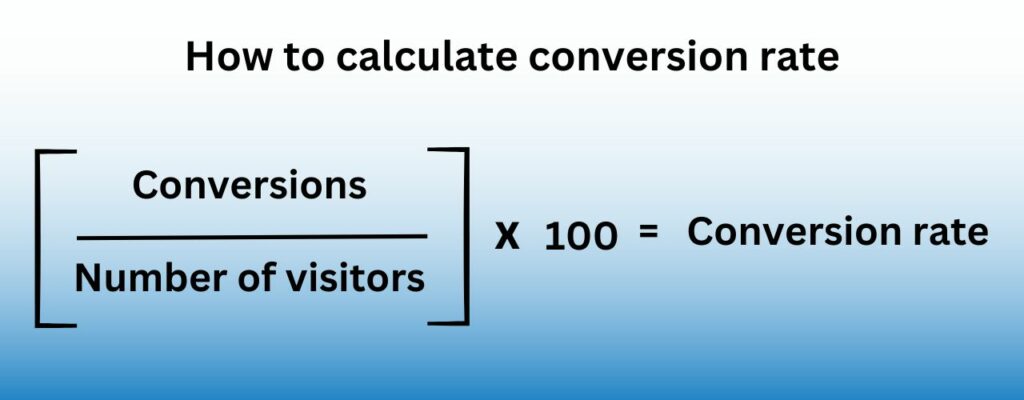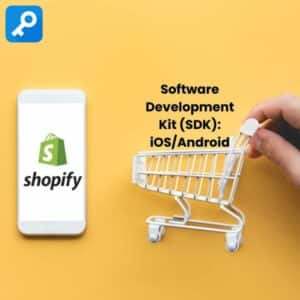What is conversion?
Conversion refers to the process of changing something from one form or state to another. However, the term “conversion” can have different meanings depending on the context in which it is used.
In business and marketing, conversion usually refers to the process of turning potential customers into paying customers or persuading someone to take a specific action. This could include signing up for a newsletter or filling out a form.
This is typically measured in terms of conversion rate, which is the percentage of people who complete a desired action out of the total number of people who were presented with the opportunity to do so.
Micro-conversions
A micro-conversion is a user's action that moves them closer to your end goal. It could be subscribing to a newsletter, watching a video, or downloading a white paper. These actions will happen before a macro-conversion.
Macro-conversions
A macro-conversion is the desired end-goal action that users take. It can include purchasing a product, becoming a paid subscriber, or completing a contact form.
What is an ecommerce conversion rate?
An ecommerce conversion rate is the percentage of website visitors who complete a desired action, such as purchasing. It measures the effectiveness of your ecommerce website at turning visitors into customers.
For example, if 100 people visit your ecommerce website and 5 of them make a purchase, your conversion rate is 5%.
A high ecommerce conversion rate indicates that your website is effective at persuading visitors to take action and make a purchase.
A low conversion rate may indicate that there are issues with your website design, product offering, or marketing strategy.
Conversion rate formula
To calculate the ecommerce conversion rate you need to take your conversion rate and divide it by the number of people that actually convert.

What period do I measure my ecommerce conversion rate in?
The period you measure your ecommerce conversion rate depends on your business goals and the nature of your ecommerce website. Generally, ecommerce businesses measure their conversion rate on a monthly basis, but you can also measure it over shorter or longer timeframes depending on your needs.
Measuring your conversion rate over shorter timeframes, such as daily or weekly, can help you identify changes in conversion rates more quickly and make adjustments to your website or marketing strategy as needed. This can be particularly useful during peak sales or when testing new marketing campaigns.
Measuring your conversion rate over longer timeframes, such as quarterly or yearly, can help you identify trends and patterns in your website performance and track your progress toward your business goals. This can be particularly useful when setting long-term targets or measuring the impact of significant changes to your website or marketing strategy.
Measuring your conversion rate consistently over time is important to identify trends and patterns. The information you gather will help you optimize your website and improve your marketing strategy.
Different kinds of conversion rates
Several different kinds of conversions can be measured depending on the goals and objectives of your website.
Some of the most common types of conversions that can be measured include the following:
Sales conversion (complete a purchase)
Lead generation conversion (fill out a form or provide contact details).
Email sign-up conversion (signup for a newsletter)
Account creation conversion
Add-to-cart conversion
Social media conversion (engaged with your social media profiles or shared content).
Video view conversion
- Organic search conversion (blog articles read monitored using scroll tracking divided by search traffic)
- Click-through rate (the number of people who click a link to your website from an ad or email)
By tracking and analyzing different types of conversions, you can gain insights into the effectiveness of your website and marketing campaigns.
Other conversion metrics to consider
Besides the most obvious actions, you may want to monitor other metrics that will give you better insight into your site visitors.
- Bounce rate is the percentage of people that leave after viewing only one page.
- Exit rate is the percentage of people that leave after viewing a specific page. If there is a high exit rate on one particular page, then it's a red flag that something is wrong.
- Average Session Duration is an engagement metric showing how long people stay on your website. Generally, the shorter time spent on your online store, the less likely the visitor is to convert.
- Pages Per Session shows you how many pages a potential customer visits before leaving. A high number of page visits with no or little conversions could mean a lack of clarity in your sales funnel. But it may also mean a higher level of engagement. (High-priced items tend to have a lot of page visits since the decision process is more involved and takes longer. Customers tend to read more to be better informed about making a decision. Example of this is high-value electronic goods, vehicles, or appliances.)
How to improve your ecommerce conversion rate
Optimize your website design and user experience
A well-designed website with easy navigation and clear calls to action can help improve your conversion rate. Ensure your website loads quickly, is easy to use, and offers a seamless checkout process.
Personalize your marketing efforts
Personalizing your marketing efforts based on customer behavior and preferences can help improve your conversion rate. Consider using targeted email campaigns, retargeting ads, and personalized product recommendations to engage with potential customers and drive conversions.
You need to understand what your visitors want and care about. Specifically, it's important to narrow down what drives them to your website or products in the first place.
To get started, you should map out a buyer persona to better understand your target audience. Once you've narrowed down your ideal customer you can design your website and marketing strategy to target those people.
Identify and address any areas of friction
There are several tools available that you can use to monitor the actions of your website users. You can use Google Analytics to identify low-converting pages and then integrate a tool such as Hotjar to determine what may be causing the issues.
- Heatmaps – allow you to see how users move and scroll on the page and what they click on.
- Session recordings show how users interact with the page and the site. Here, you will uncover UX issues such as broken links or bugs.
- To get direct feedback from users, you can place a widget on the problem pages so your site visitors can tell you about their experiences and issues.
What is a good conversion rate?
What constitutes a good website conversion rate depends on various factors, such as the type of business, industry, product, or service, and traffic source.
Conversion rates can vary widely, and what might be considered a good conversion rate for one business might not be the same for another.
The average conversion rate for e-commerce is around 2-3%. This means that out of 100 visitors to your website, 2-3 of them will convert into customers or leads. You should aim for a baseline of 3% plus for your online store. However, depending on your business goals, you may want to aim for a higher or lower conversion rate.
There is no one-size-fits-all solution when it comes to conversion rates, and what's most important is to focus on improving your conversion rate over time.
What factors impact conversion rates
Several factors determine conversion rates, but each one can be adjusted to give better performance.
The most common things include but are not limited to:
- How well is your app or website optimized
- The types of conversion required such as purchases or filing in forms
- The source of visitors, which depends on channels and mediums
- Location may play a role since some countries are more interactive online than others, especially for online purchases
- The kind and frequency of messaging on the landing pages
- Type of device used – mobile, desktop, or tablet.
- The kind of experience users get on the site and the type of design used
- A disconnect between brand messaging and the actual website
Why conversion rates are important
Conversion rates are important for ecommerce because they directly impact the revenue and profitability of your online business. A high conversion rate means more visitors become customers, which is more sales and revenue. On the other hand, a low conversion rate means you're losing potential customers and missing out on revenue opportunities.
In addition, tracking and improving your conversion rate can help you:
Understand your customers better: By analyzing your conversion data, you can gain insights into your customers' behavior, preferences, and needs. This information can help you improve your website design, product offering, and marketing strategy to serve your customers better.
Identify areas for improvement: By identifying the pages or steps in your sales funnel where visitors are dropping off, you can optimize those areas to increase your conversion rate. For example, if many visitors are abandoning their carts during the checkout process, you may need to simplify the checkout process or offer more payment options.
Maximize your marketing ROI: By improving your conversion rate, you can generate more revenue from the same amount of traffic, which can improve your return on investment (ROI) for your marketing campaigns.
In summary, a high ecommerce conversion rate is critical for the success of your online business, as it directly impacts your revenue and profitability. By tracking and improving your conversion rate, you can better understand your customers, identify areas for improvement, and maximize your marketing ROI.








